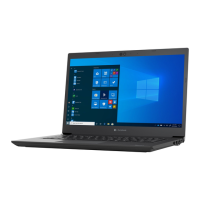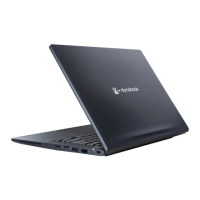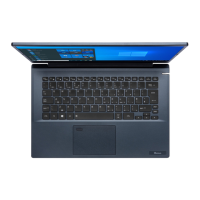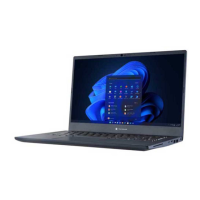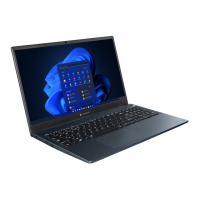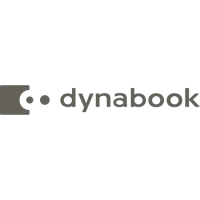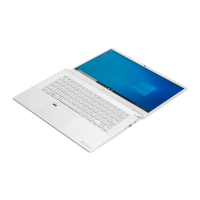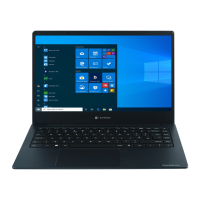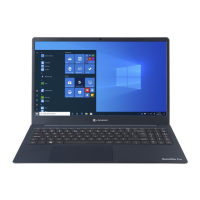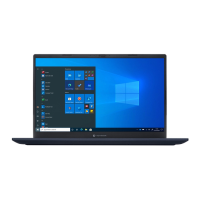Do you have a question about the dynabook TECRA A40-E and is the answer not in the manual?
| Model | TECRA A40-E |
|---|---|
| Display Size | 14 inches |
| Operating System | Windows 10 Pro |
| Display Resolution | 1920 x 1080 |
| Graphics | Intel® UHD Graphics 620 |
| Weight | 1.5 kg |
| Ports | USB-C, USB 3.0, HDMI, Ethernet, Headphone/Mic combo |
| RAM | Up to 32GB DDR4 |
| Battery | 4-cell Li-ion |
Details copyright, disclaimer, and trademark information for the manual.
Provides essential regulatory information, including FCC compliance details.
Warns about chemicals in the product known to cause cancer or birth defects.
States compliance with relevant European Directives and standards for the product.
Lists hardware and documentation items included with the computer.
Explains the manual's formatting for terms and operating procedures.
Guides initial setup, including connecting power, turning on, and basic OS interaction.
Introduces core Windows features like the Start menu, taskbar, search, and settings.
Explains how to shut down, sleep, or hibernate the computer safely.
Details creating recovery media and restoring the system from it or partitions.
Identifies components on the computer's front when the display is closed.
Describes ports like DC IN, USB Type-C, HDMI, and memory slot on the left side.
Identifies ports like Smart Card, USB, and LAN on the computer's right side.
Details cooling vents and stereo speakers located on the back and underside.
Identifies components visible when the display is open, like camera and keyboard.
Covers keyboard, touchpad, and fingerprint sensor usage and features for input.
Explains how to interact with the computer using touch gestures like tap and pinch.
Details gestures and operations for the computer's touchpad for navigation and control.
Covers keyboard layout, indicators, function keys, and special Windows keys.
Explains battery care, charging, monitoring capacity, and strategies for extending battery life.
Guides on using memory cards, formatting, inserting smart cards, and SIM card installation.
Covers GPS, HDMI, USB Type-C, LAN, Wireless Display, and Security Lock functions.
Introduces pre-installed utilities like dynabook Settings, eco Utility, and system tools.
Details settings for eco mode, USB charging, keyboard options, and system passwords.
Explains user/supervisor passwords, pre-boot authentication, and Intel AMT functions.
Describes how to use the utility to erase storage drives and manage partitions.
Highlights features like automatic power off, sleep/hibernation modes, and heat dispersal.
Provides guidelines for identifying and resolving computer problems effectively.
Offers basic checks for common issues like peripheral connections, drivers, and system configuration.
Guides on identifying issues related to software, hardware, and system components.
Addresses problems like unresponsiveness, startup failures, overheating, and power issues.
Lists areas to check for hardware issues: power, display, storage, keyboard, and connectivity.
Provides solutions for issues with USB devices, sleep/charge, sound systems, and external monitors.
Covers troubleshooting for LAN, Wireless LAN, and Bluetooth connectivity problems.
Advises on seeking assistance, checking documentation, and contacting support for unresolved issues.
Details the computer's dimensions, operating conditions, and power specifications.
Specifies requirements for AC power cords and lists relevant certification agencies.
Covers wireless technology interoperability, health considerations, and regulatory compliance.
Details wireless LAN, Bluetooth technology, security, and radio frequency usage.
Provides legal footnotes and performance factors for CPU, Memory, Battery, and LCD.
